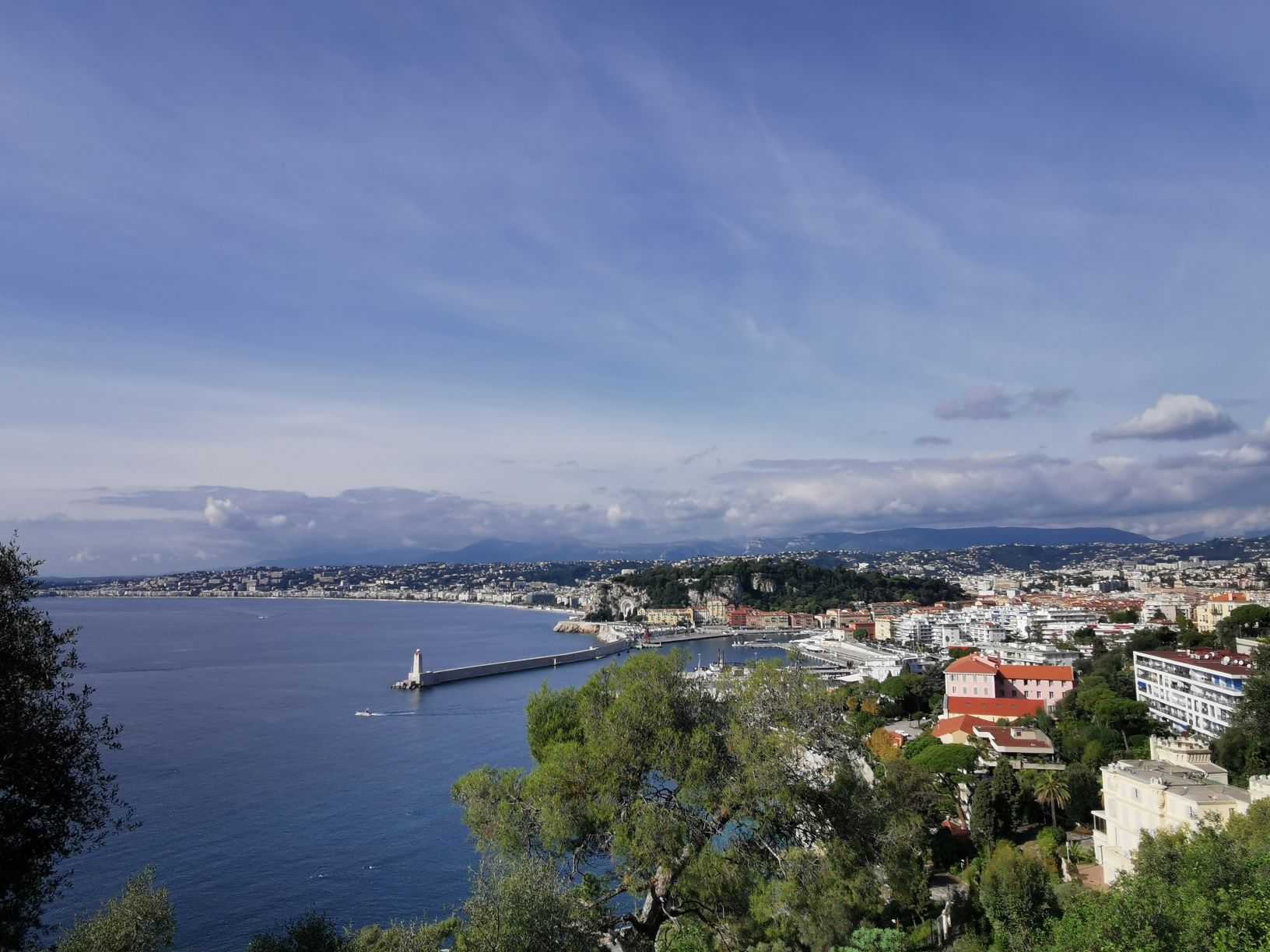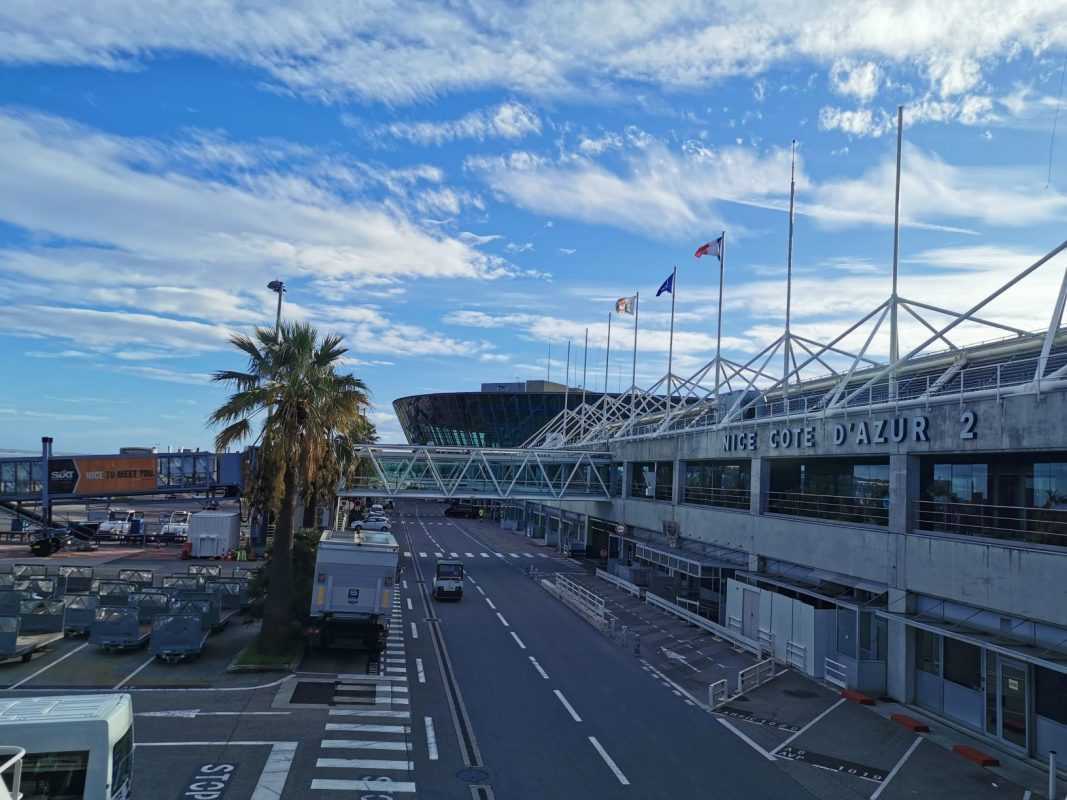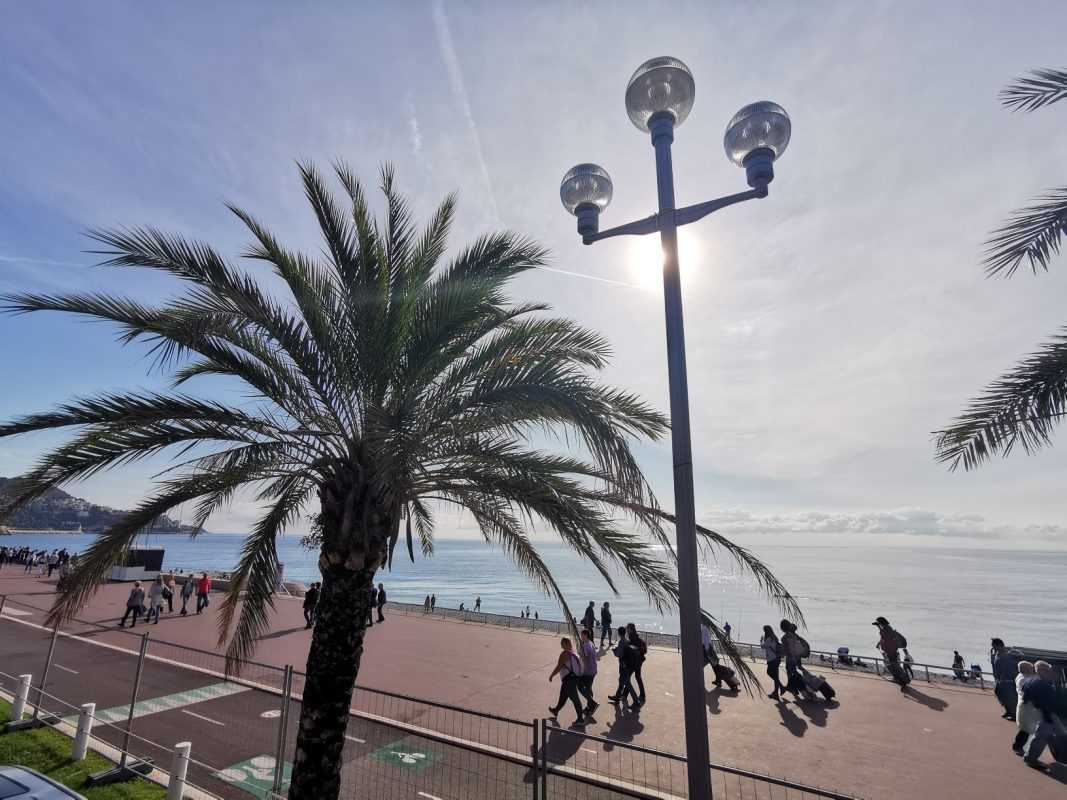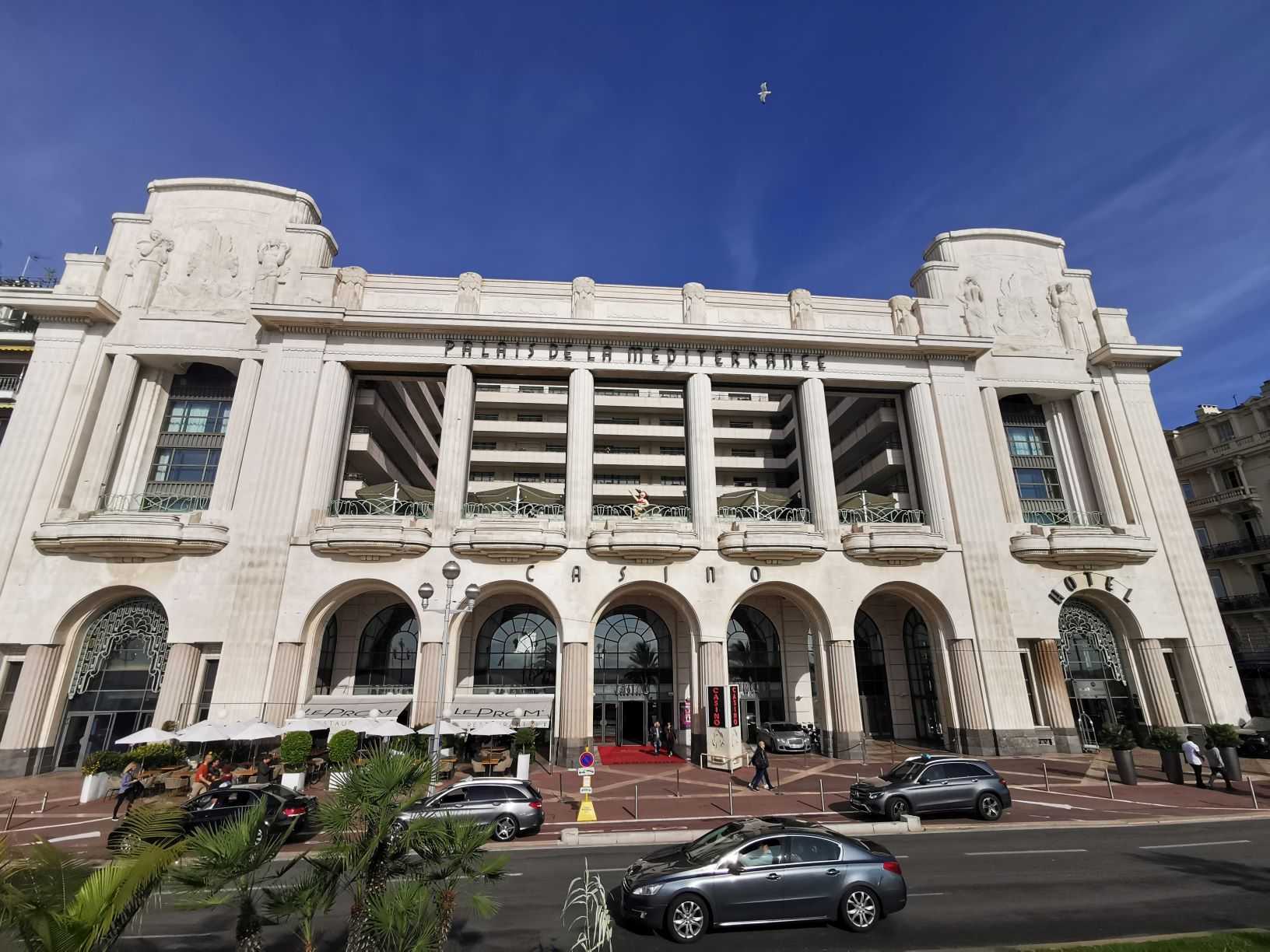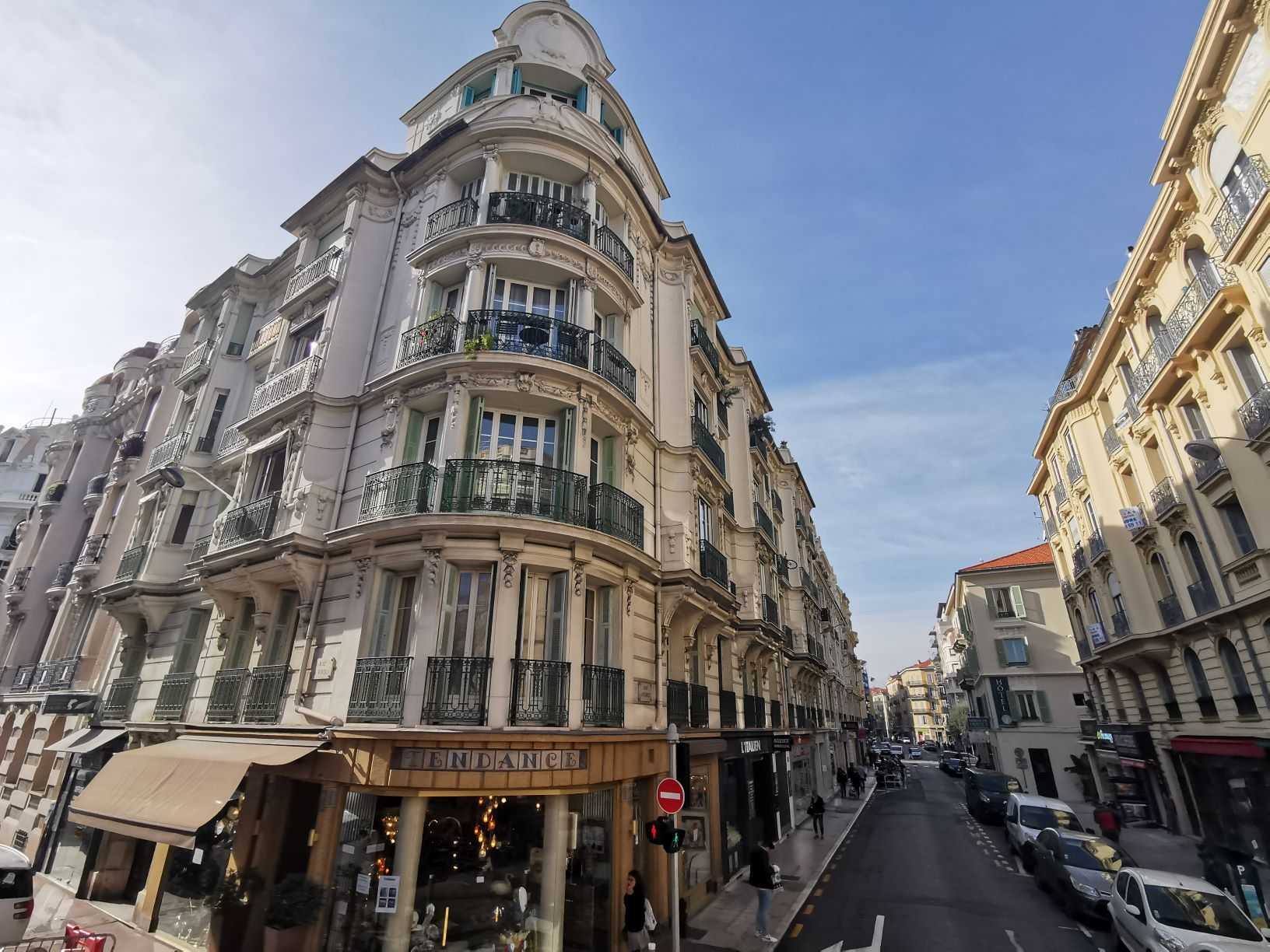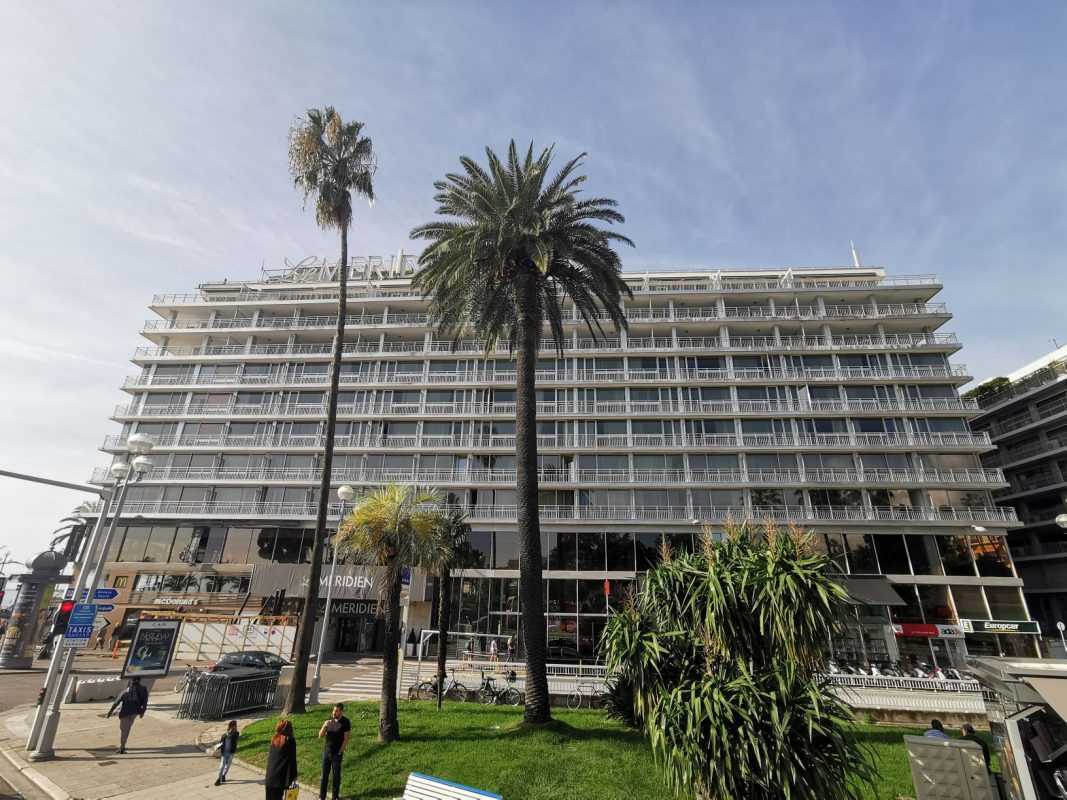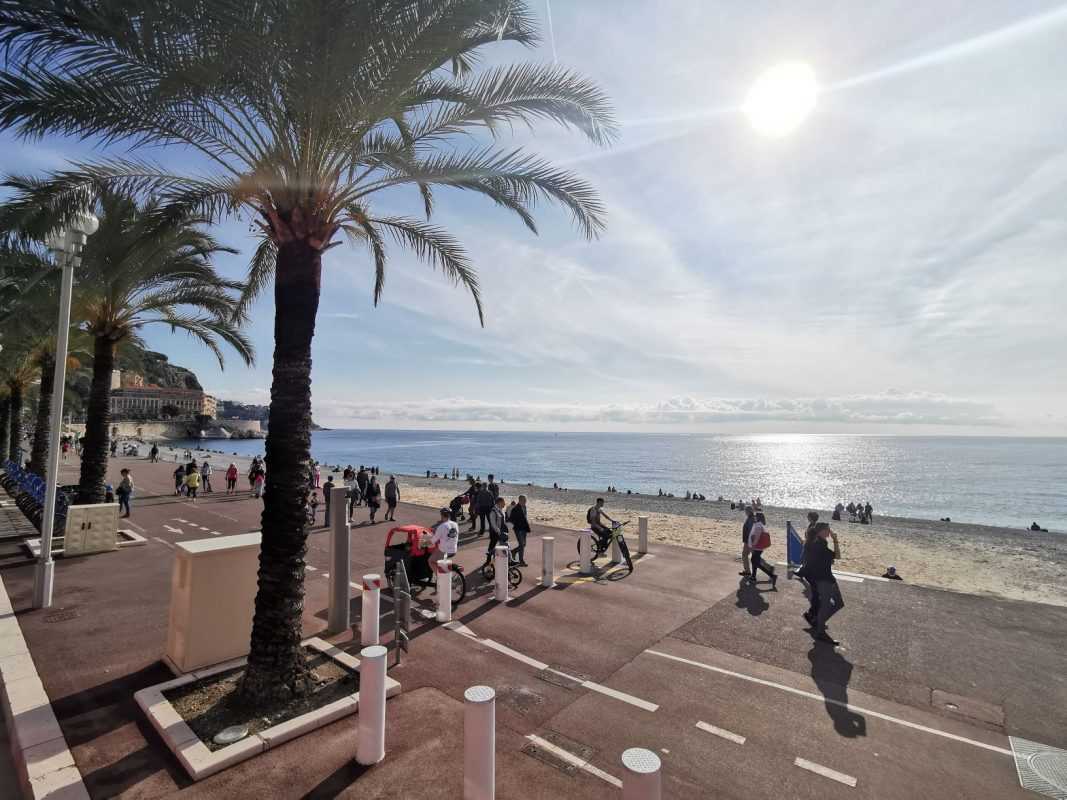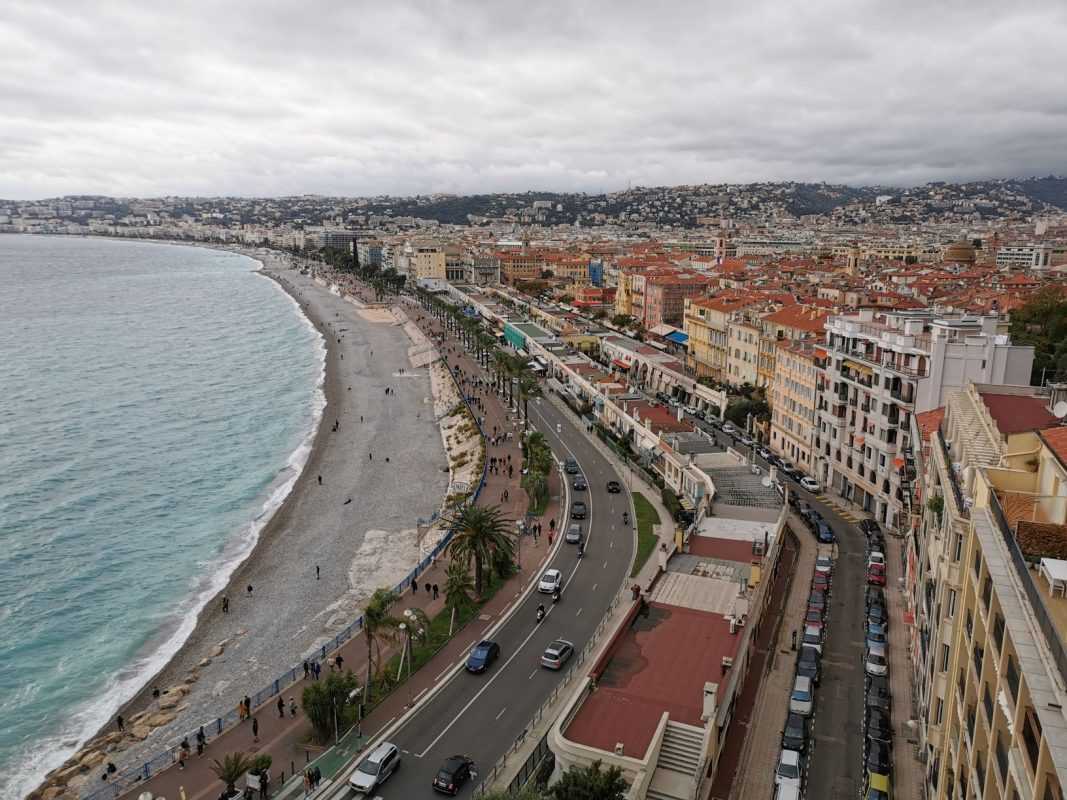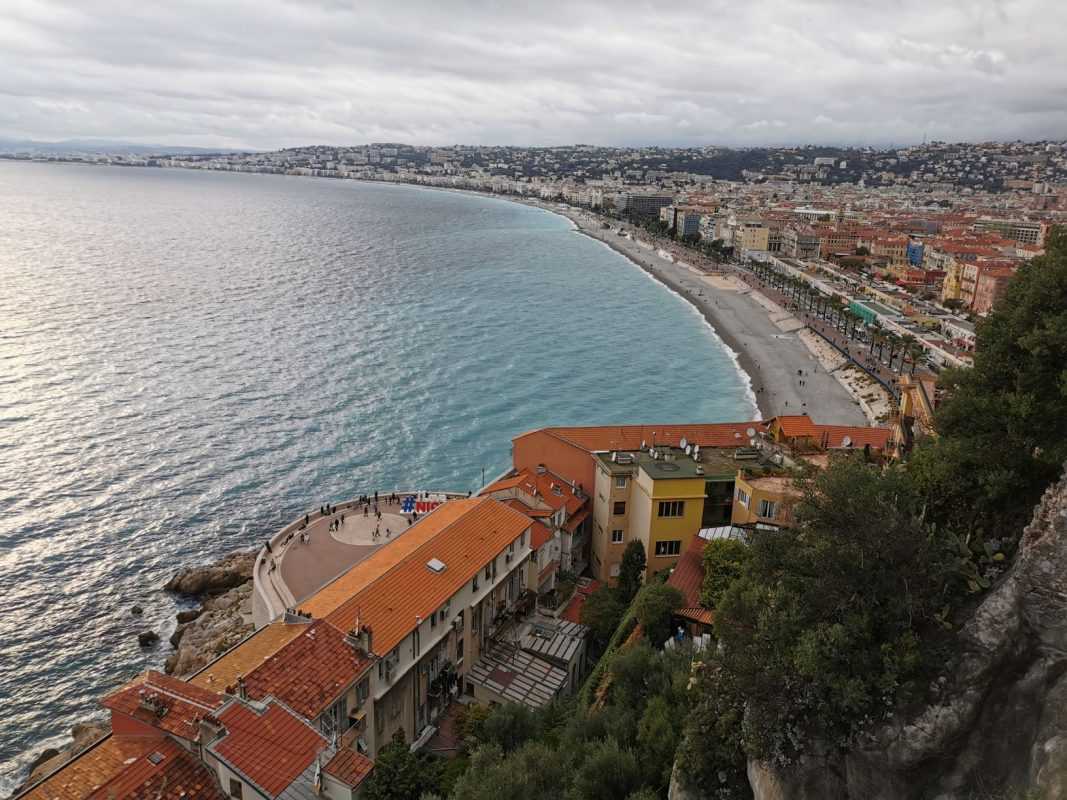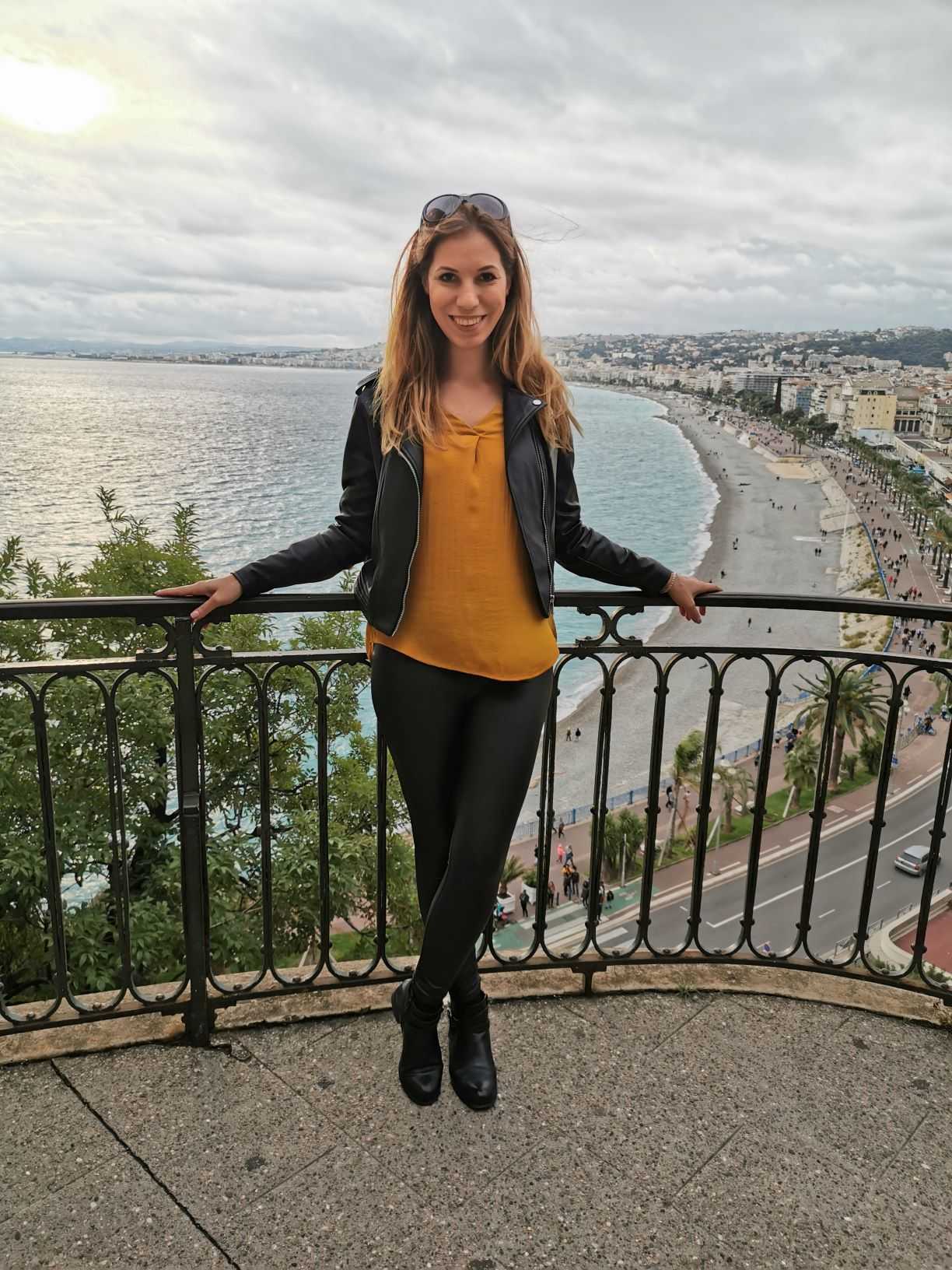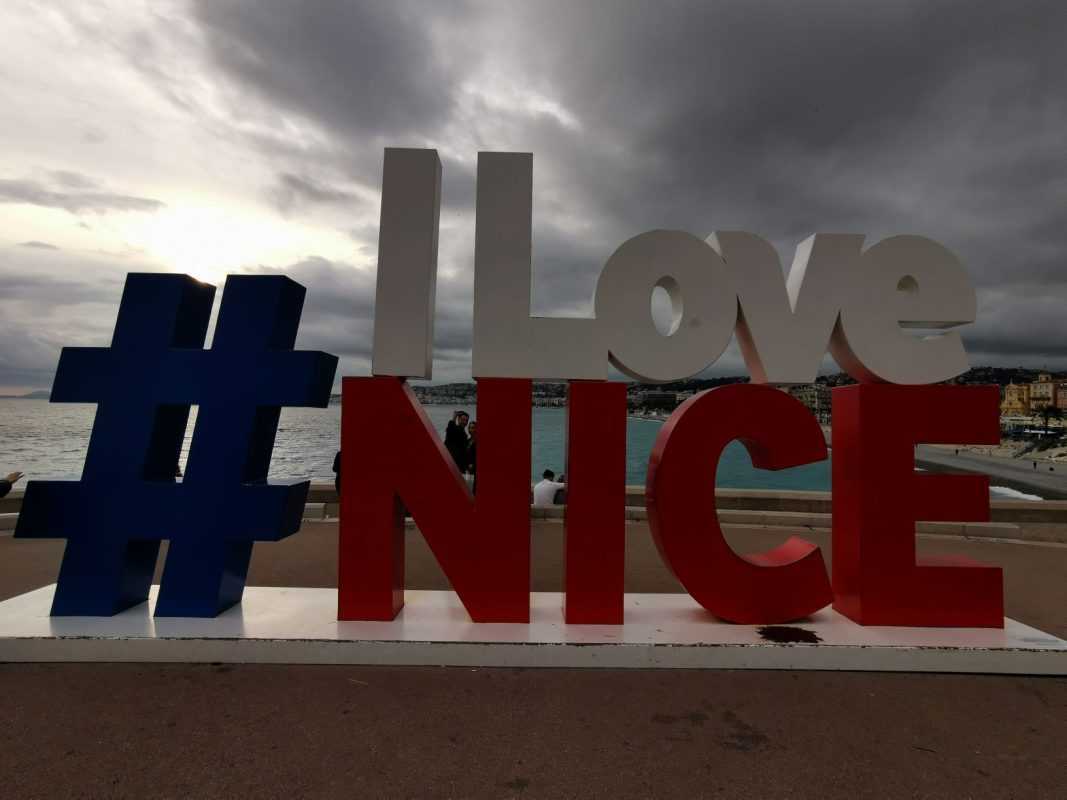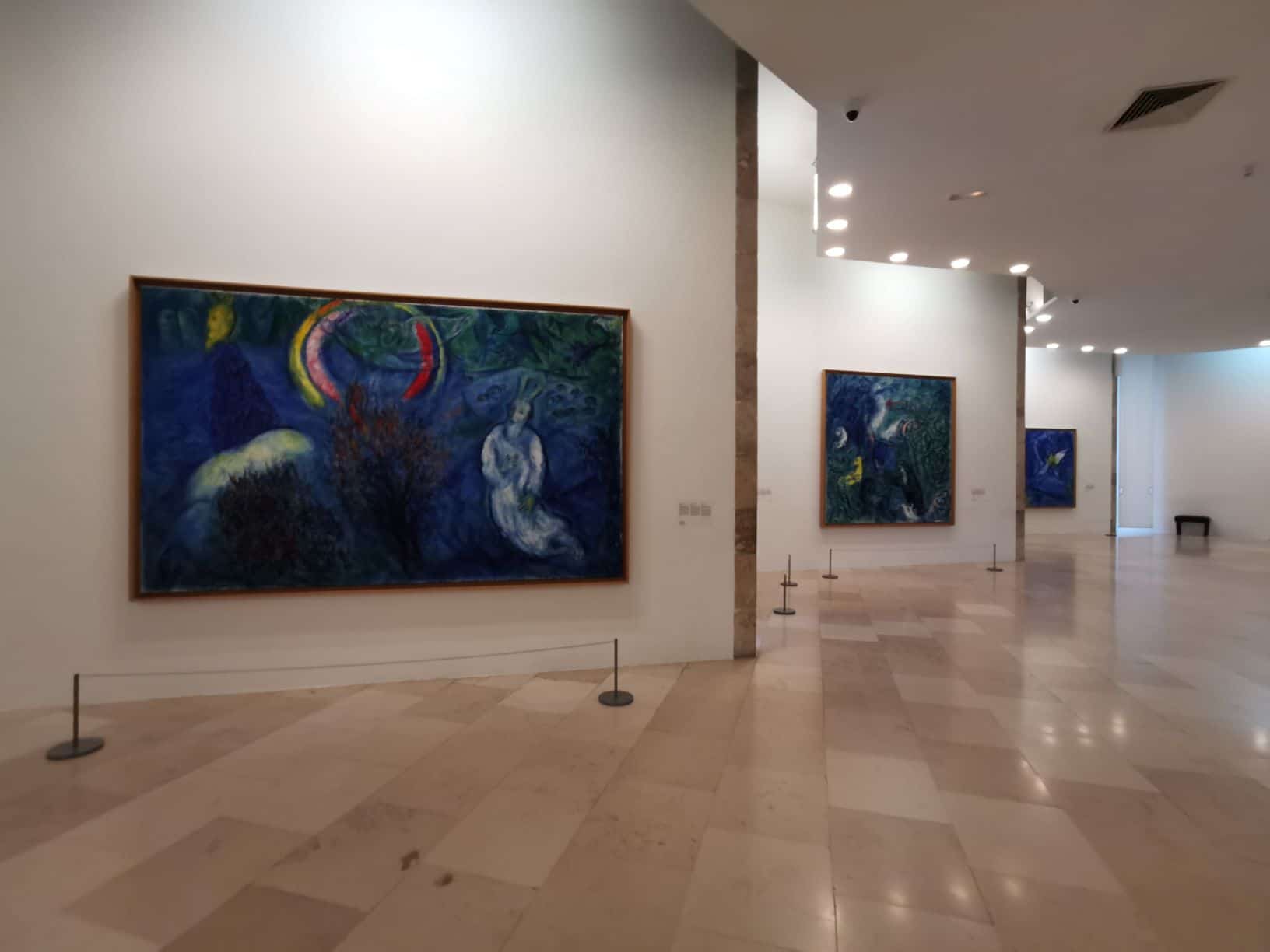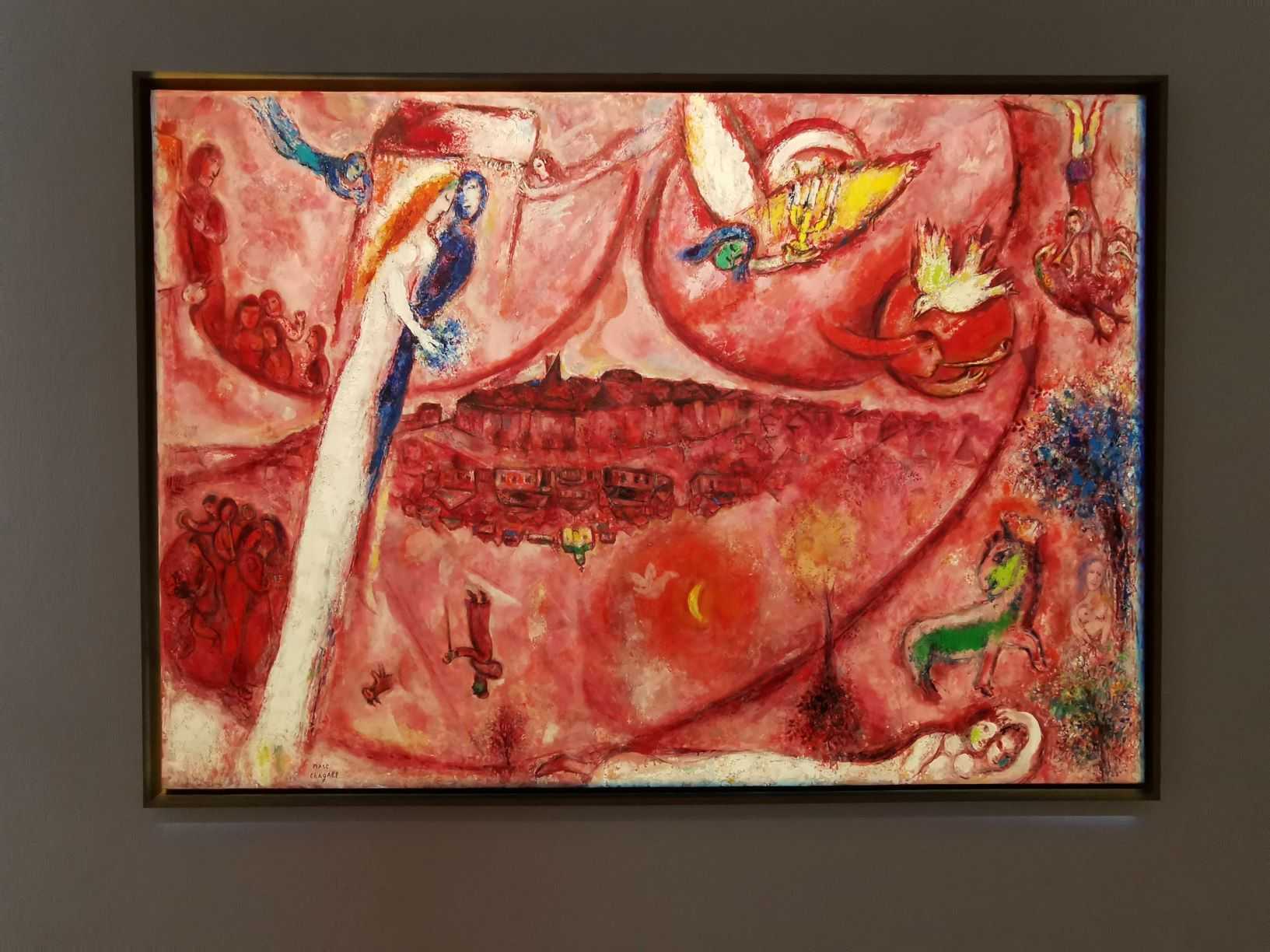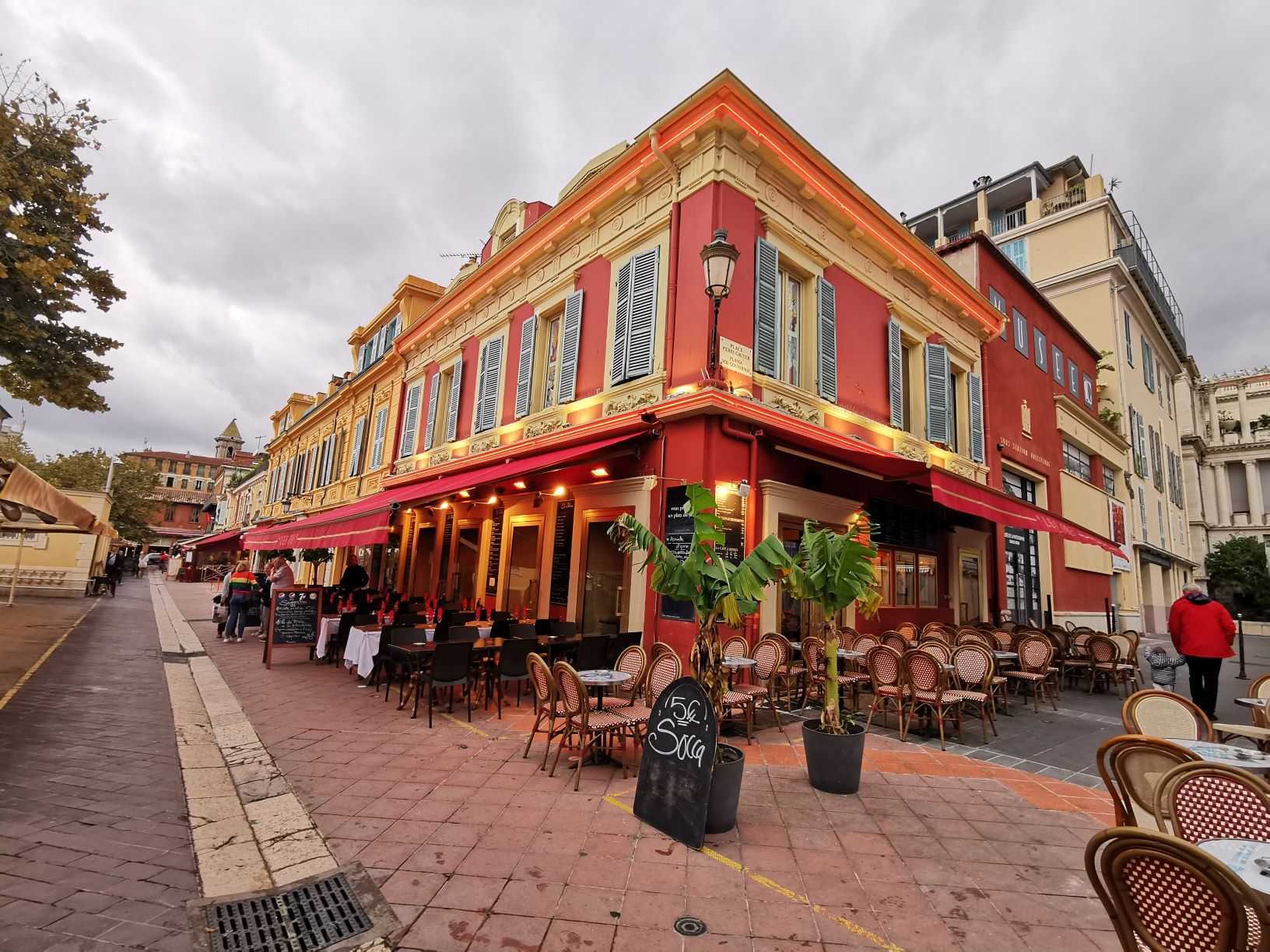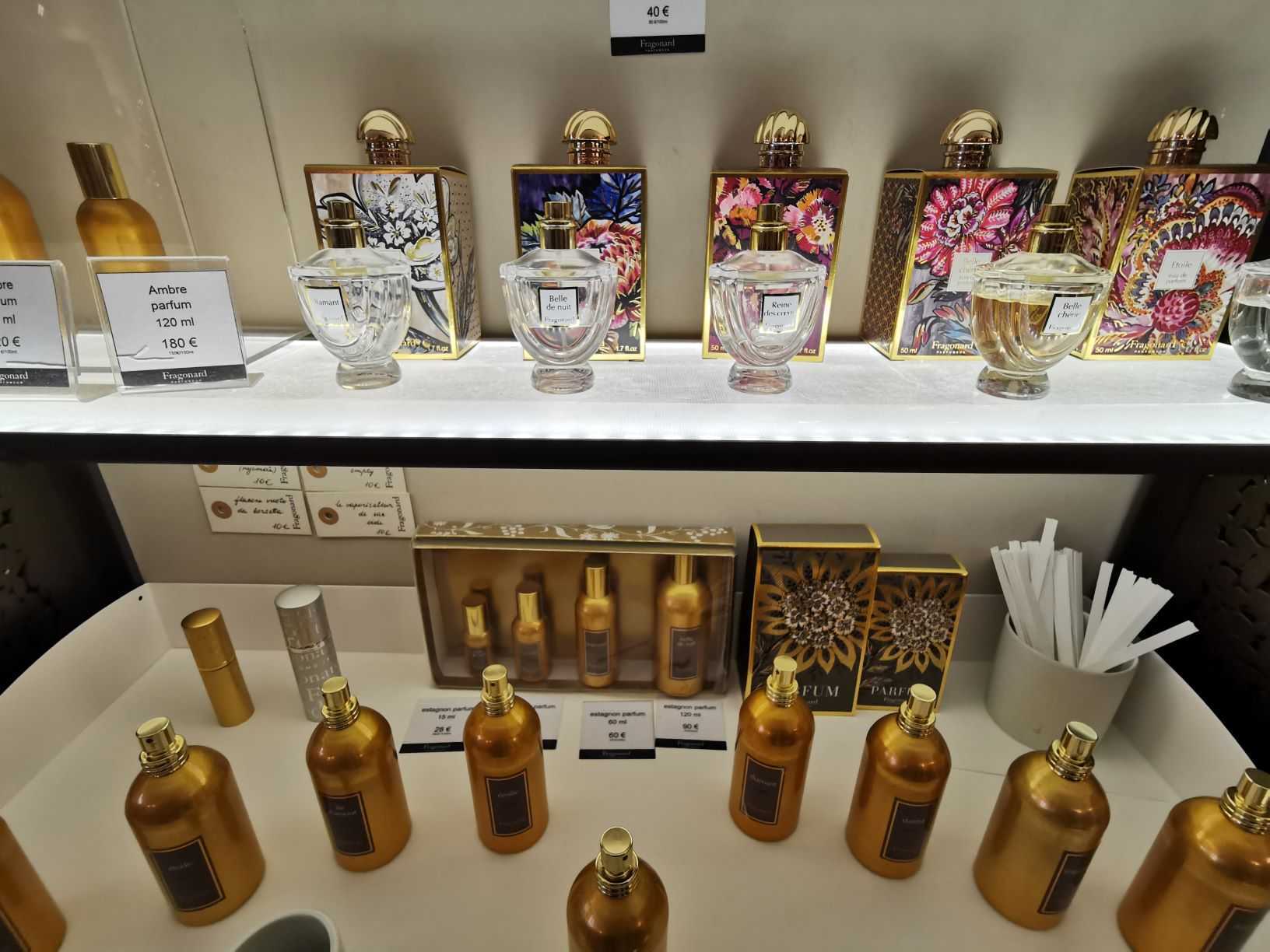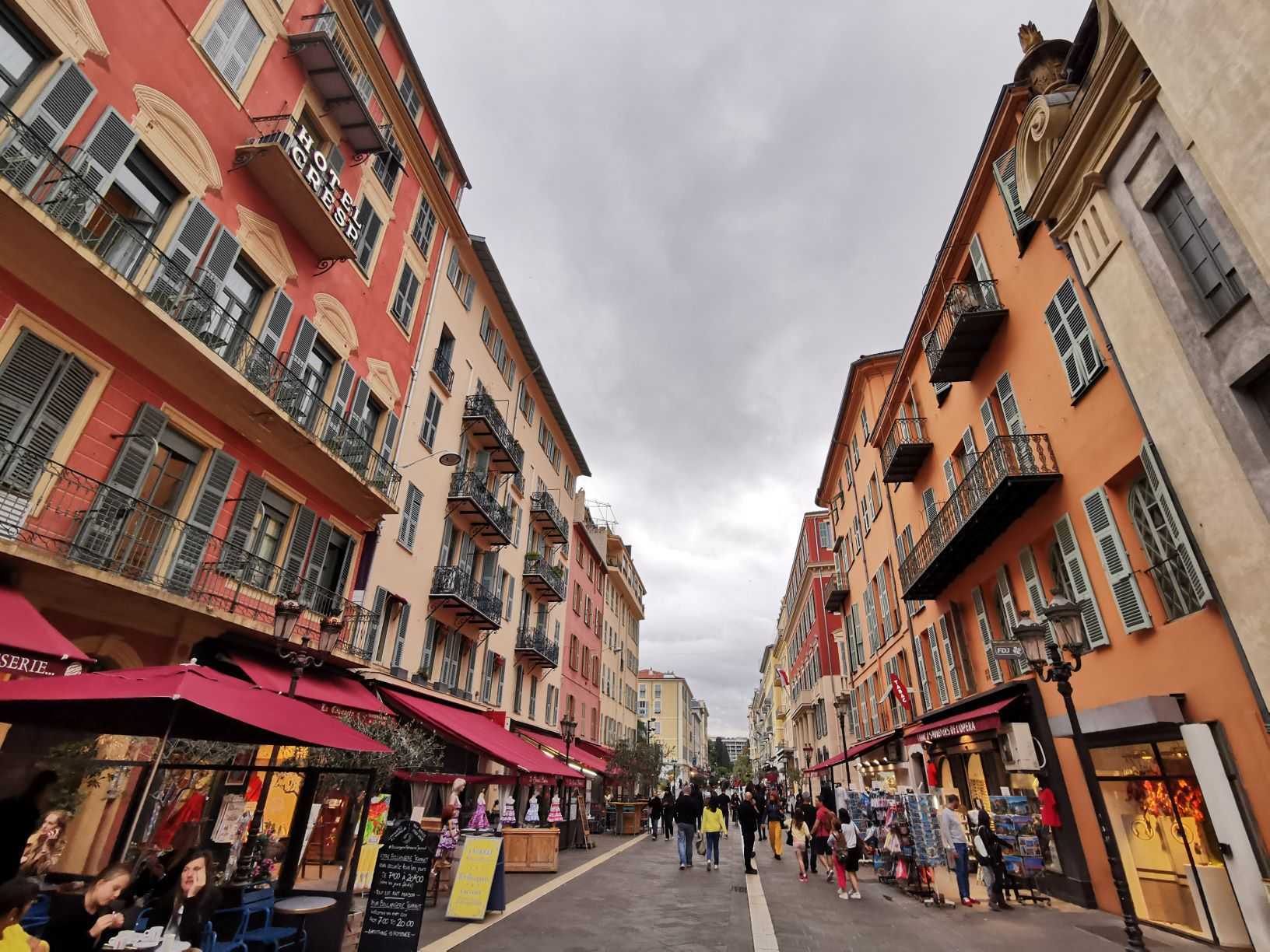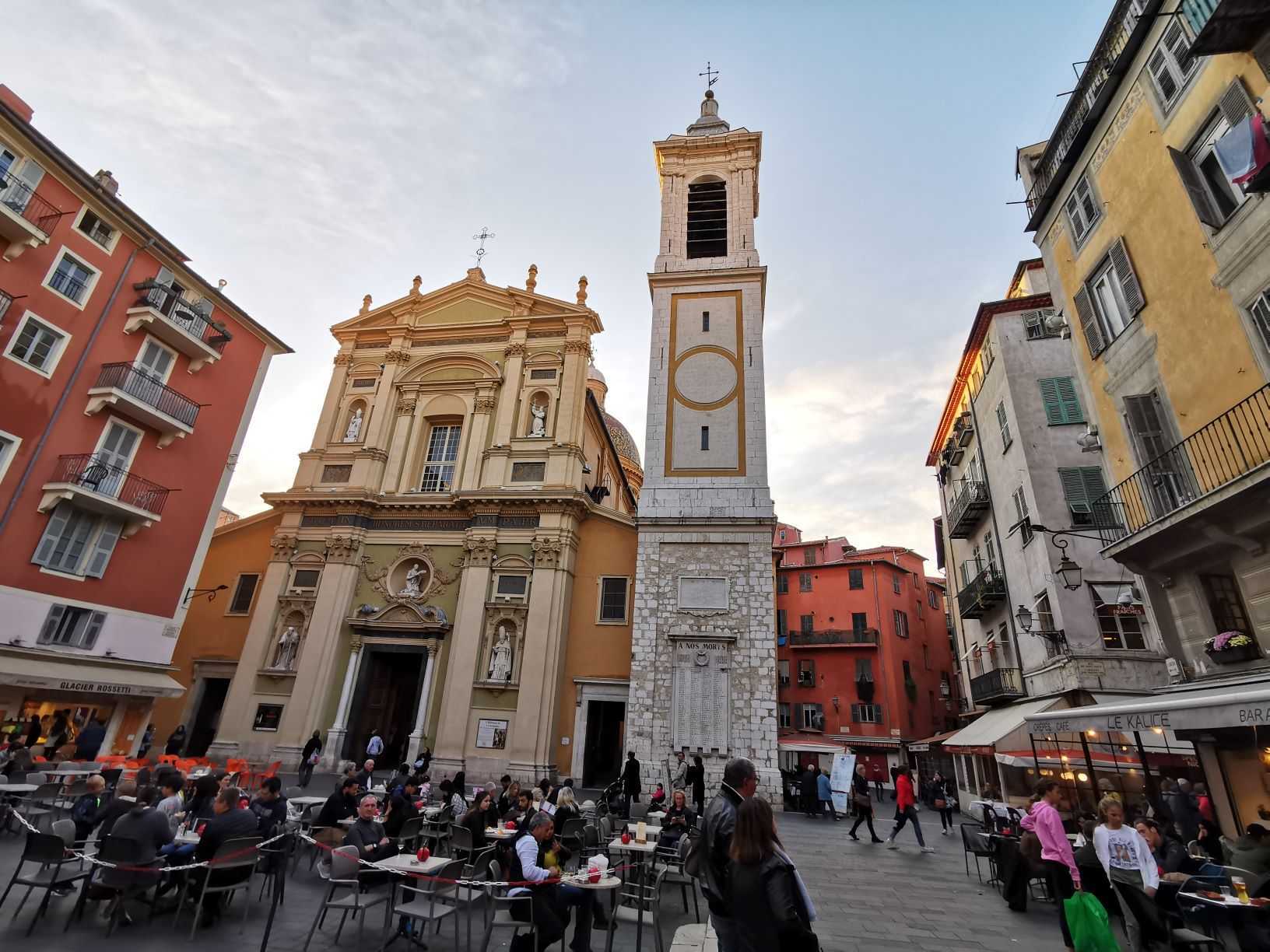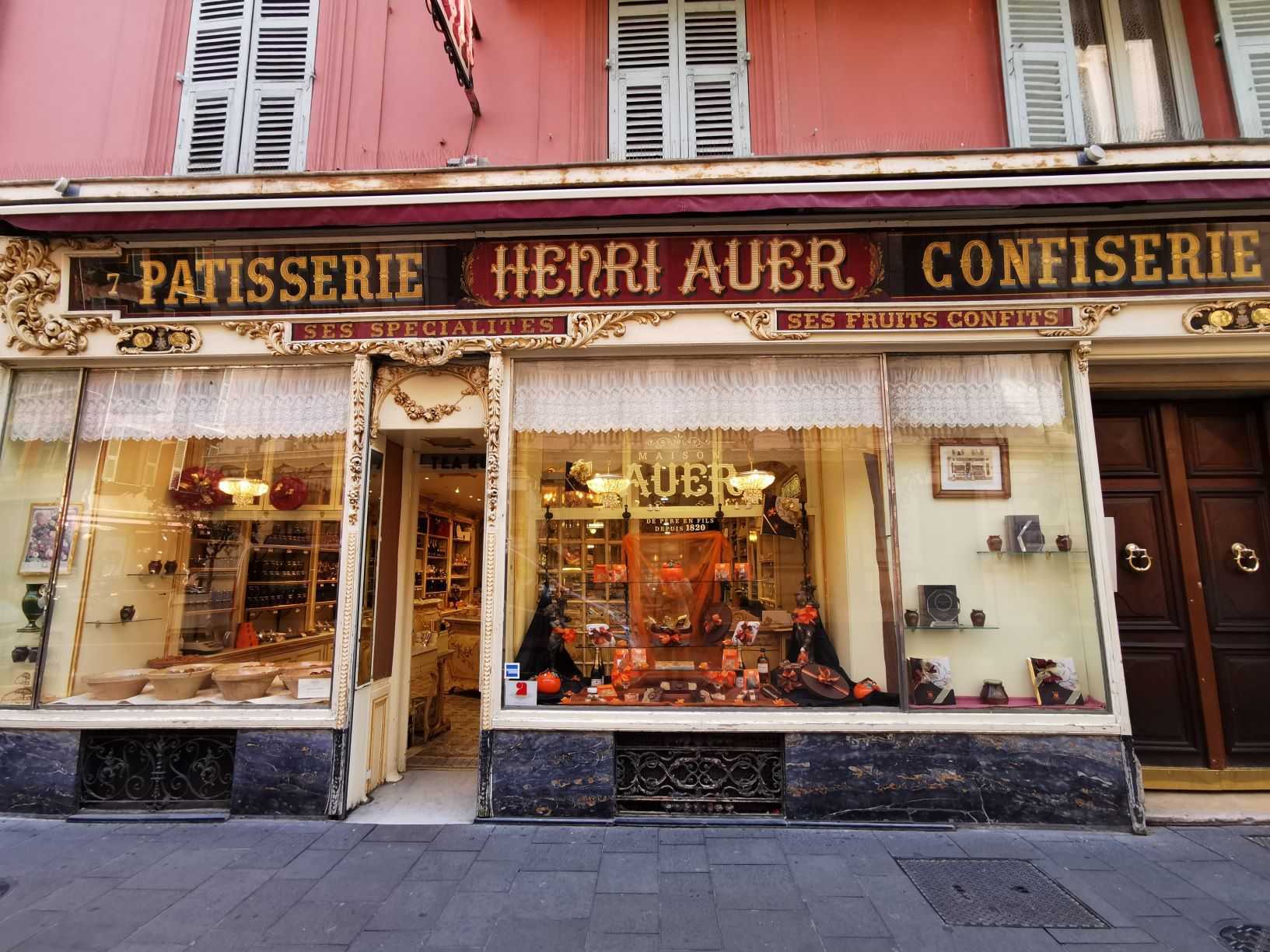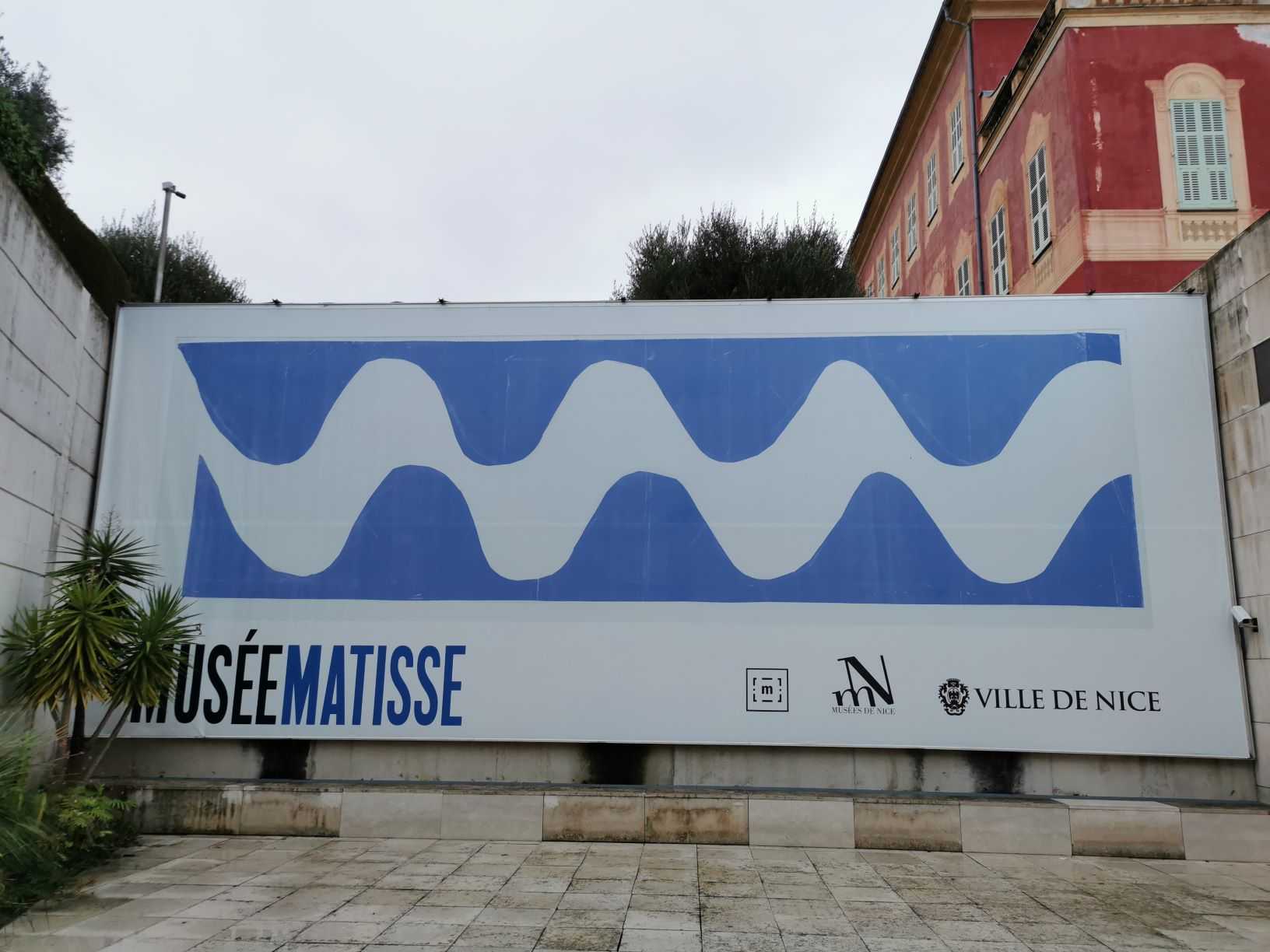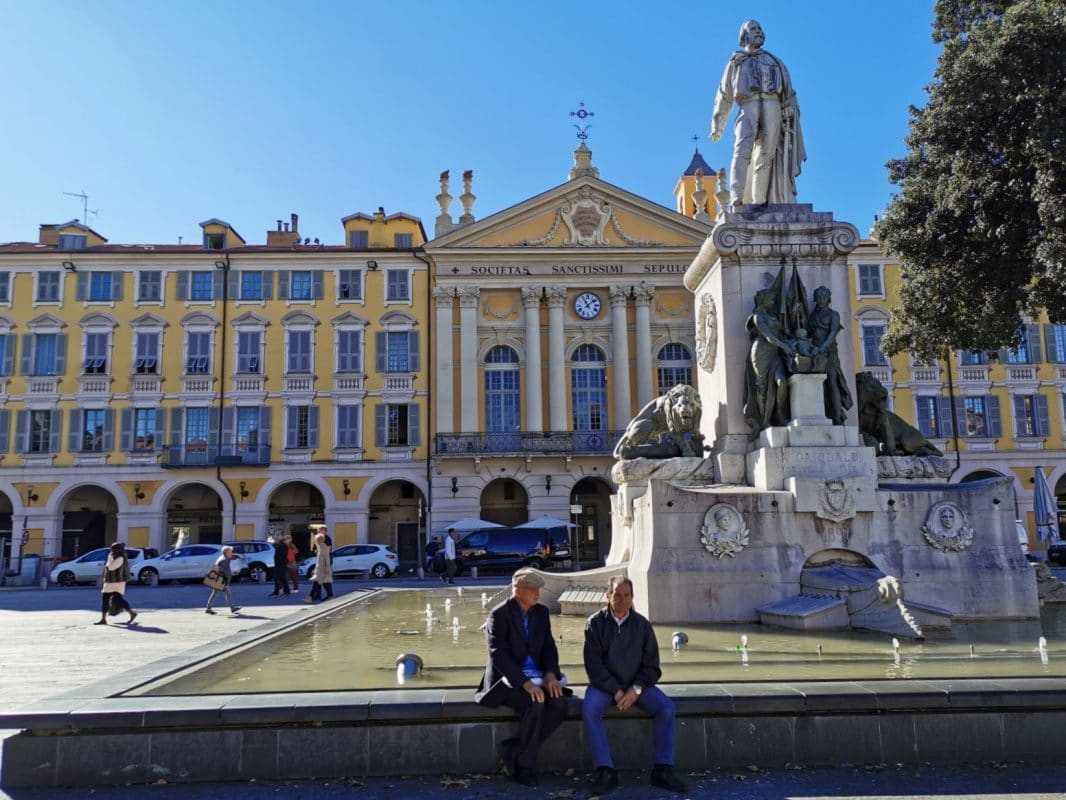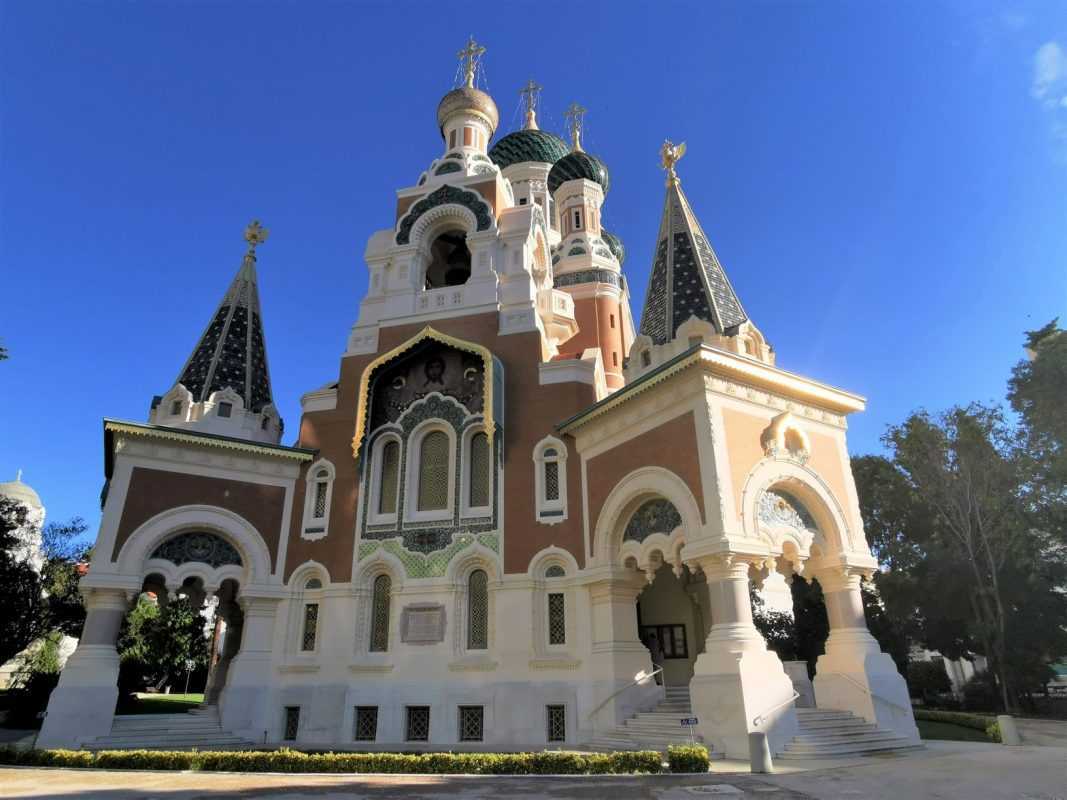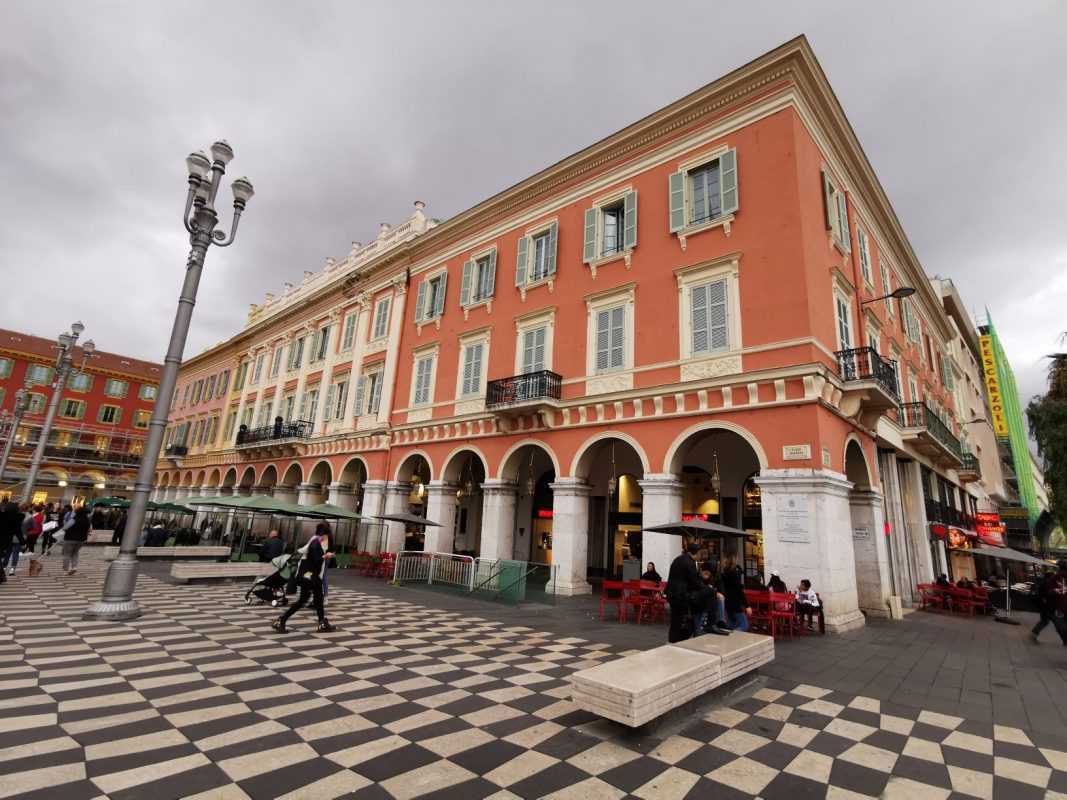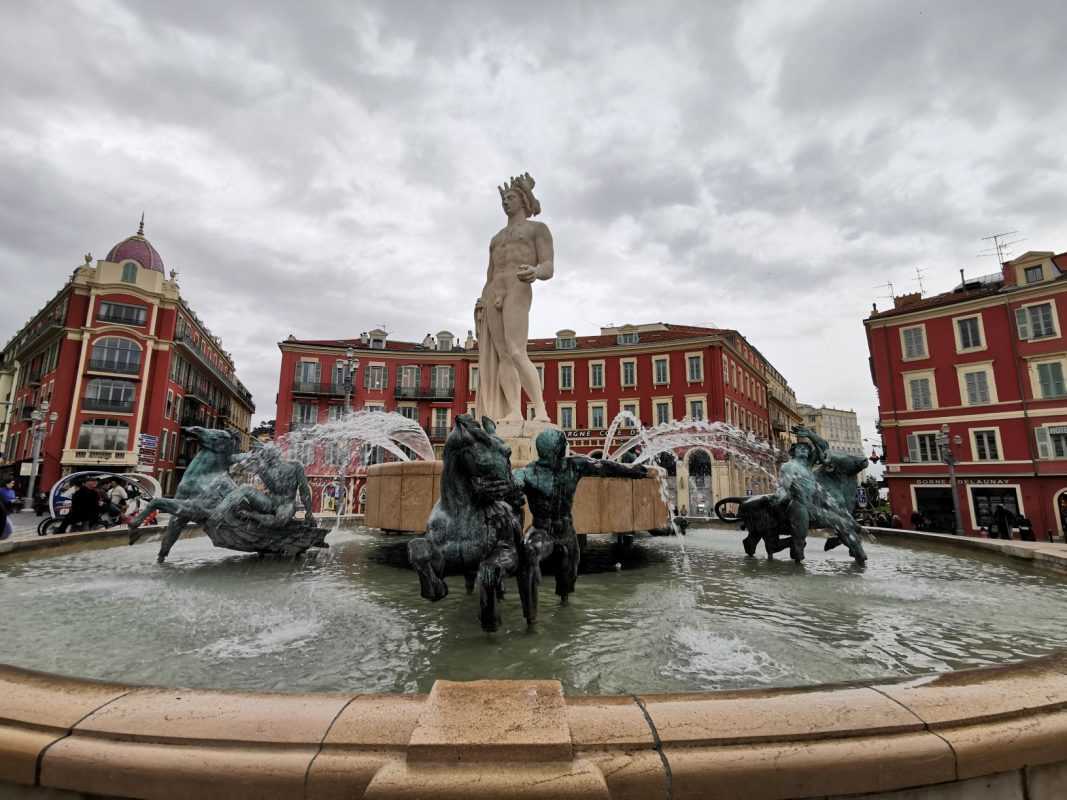The southern part of France is also referred to as the Cote d’Azur, or Azur coast. It’s not a coincidence. The Mediterranean Sea on this stretch has a truly amazing color and offers unforgettable views of the visitors in the embrace of colorful houses on the beach. During the summer months, the coast is filled with parasols, and at sea, sailing boats and yachts wind the foam as tiny white dots: this is undoubtedly the general view when the French Riviera is filled with life. But if you want a quieter time and would like to recharge, I recommend the autumn period for travel. Even in the middle of October and November, the weather is pleasant and everything is green, as if nature had forgotten that it was already autumn.
Fortunately, there is already a direct low-cost flight from Budapest to Nice. In the off-season, for a few thousand forints, in just 2 hours you can find yourself by the azure-colored water to take several kilometers of refreshing walks a day, and to absorb the unadulterated atmosphere of the French Riviera. I came to Nice as a solo traveler, the second time in my life, which I don’t regret at all. Why you should consider traveling alone can be read here. It may have been the sunny beach, or that it wasn’t the first time I’d traveled alone to a strange place, but this time I felt much better than on my first solo trip to Dublin (I wrote about it here).
Plus, I took another step outside that particular comfort zone. In Nice, life is not cheap, it is worth preparing for this in advance. Instead of renting a room or apartment alone, I shared it with three other girls and slept in a hostel. I was waiting for the atmosphere of the college years to come back and have a good “talk” in the evenings about what happened that day and who did what. But the other girls, in bed at night, hid behind the screen of their MacBook laptops. So after a few experiments, I gave up my attempts to chat.
Maybe the good 10- to the 15-year age gap between us is consistent with, I don’t know. In any case, it was an interesting experience to see people talking to their laptops or phones rather than the real people around them. Well, after all, let’s see what’s worth doing and seeing in Nice in the fall season.
Arriving at the airport is the easiest way to get into the city by tram. The ticket costs only €1.50 and can be used for any public transport vehicles for 74 minutes. You can use it to take a bus, another tram without having to buy a new ticket. In fact, from Nice, you can take bus 100 to the surrounding cities (Villefranche-sur-Mer, Eze, Monaco, Menton) with a €1.50 ticket too. There is hardly a cheaper transport option than walking on the Mediterranean coast than the bus. If you are in Nice for a long time, you may want to buy a French Riviera Pass (24h €26, 48h €38, 72h €56) at your local tourist office.
The card cannot only be used for the city, but also for 60 of the sights in the area free of charge. In fact, the Hop-on-Hop-off bus can be used free of charge, which is useful only because the attractions in Nice are geographically quite far apart. Despite the free transport, I still walked 10-15 kilometers a day to make the most of the good time. Fortunately, the French Riviera was gracious to me in November and gave me 18 degrees and sunshine almost all along. Nice hides countless interesting sights, buzzing places and charming streets that would be impossible to list in a post. Therefore, I have brought you the attractions that are dearest to me, which you will certainly not be disappointed to see once your way to Nice.
Promenade des Anglais
In other words, the Promenade of English, which owes its name and creation to the English aristocratic guests who live here once. In 1820, it was a harsh winter in Europe, prompting many beggars, homeless people to come to Nice for a pleasant climate. The English here proposed giving people work and, with the support of the Church of England, building a promenade on the beach. This is how today a beautiful 7 km long road runs along the Mediterranean coast in Nice, named after the English. Previously, the tops of the houses served as a road, this is just a matter of interest, you can see it in the picture.
The Promenade is full of people over the weekend, a popular place for cyclists, families, moms in strollers, runners and skateboarders. Probably the crowding and popularity of the place gave the idea of a suicide bomber driving a car into the crowd celebrating here in 2016, killing 86 people. Most of the promenade has since been blocked by fences and columns from the main road, where almost 100,000 cars pass through every day.
Colline du Chateau
The most beautiful view of the Nice bay is from the castle towering at the top of the surrounding hill. The easiest way to get to the place is from the Vieux-Nice side, but there are also roads and stairs leading up from the port side, only from there the road is less spectacular. Archaeological finds prove that the hill had been inhabited since Roman times, and the medieval castle at the top was built in 1706 in the 14th century. It was occupied by King Louis of France. The ancient times are now preserved only by the 16th century Tour Bellanda Tower.
It is worth stopping in several places and admiring the view of colorful houses and azure sea, which perfectly reflects the main attraction of the French Riviera. In fine weather, you can see the snow-covered peaks of the Alps from here. Although I haven’t met it during my walk, but there is also an artificial waterfall in the park since the 18th century, which may be worth visiting around the Colline du Chateau.
Marc Chagall Museum
Marc Chagall, originally of Russian descent but later he received French citizenship, is one of the most prominent painters of the 20th century. His dreamlike paintings do not belong to any of the great trends, and his innovative vision had a great impact on the expressionists. In Nice, mainly biblical-themed pictures are exhibited in the museum, but some mosaics and glass windows can also be found here. Chagall was not only a painter, but also a ceramicist and sculptor. Among other things, the glass windows of the Hadassa Medical Centre in Jerusalem praise his handiwork.
Vieux-Nice
Located in Nice’s old town, Cours Saleya pedestrian street is a must-see place for tourists. Every day of the week, the streets are flooded with fruit and vegetables, and on Mondays, the area is the home of the flea market. It’s nice to just walk around in the colorful old houses and narrow alleys. Watching people while they drink their morning coffee on the terrace of one of the cozy cafes. To enter la Cathédrale Sainte-Réparat Church to say a prayer of gratitude.
Smell all the scents of the flower field in the Fragonard perfume sample shop. Or taste delicious chocolate at Maison Auer, one of the oldest family sweet shops in Nice since 1820. The possibilities are endless in the old town, but it’s safe to say that everyone here can find the place and pastime that suits their own interests.
Henri Matisse Museum
Another great artist of the French and the pioneer of fauvism (savages), Matisse, also has a permanent museum in Nice. The painter regularly spent the winter here from 1916 onwards, and later half the year. The exhibition is housed in a 17th-century villa consisting of 68 paintings and hundreds of drawings. Most of them were selected and donated by Matisse himself to the museum.
Garibaldi Square
English has a connection to Nice through the promenade, while the Italians tie to the city through their national hero. Giuseppe Garibaldi, who led the Italian reunification known as Risorgimento, was born in Nice. Garibaldi Square was built in 1773, making it the oldest square in the city. Since Nice at that time belonged to Italy and not to France, the square and the surrounding buildings also bear the Italian architectural style. Today, the square surrounding the Garibaldi statue is a busy transport and city hub, with many cafes and restaurants. If you are not walking from the sea, then the old town is also worth accessing from here.
St. Nicolaus Russian Orthodox Church
In addition to the onion-shaped building is undoubtedly a beautiful sight, its interesting feature is that outside Russia’s borders it is the largest Russian Orthodox church ever built. In 1912 Nicholas raised it in memory of his deceased uncle Nikolai Aleksandrovich Tsarevich. The church was owned by the Tsarist family, and later the owner of the cathedral was transferred to the Russian Orthodox Association of Nice. After a lengthy legal procedure, Russia claimed St. Nicholas Church from France on the grounds that it belongs to the Russian Federation and it is not ecclesiastical but a tsaristic property and succession.
Place Masséna
Nice’s main square reminded me mostly of a chessboard at first sight with its black-and-white-like paving stones. Even the figures are there, as Apollo’s 7-ton white marble is surrounded by horses galloping furiously in the fountain. In addition to the tram tracks in the middle of the square, the square is extremely spacious and pedestrians also play the main role here. In the evenings, street music and dance formations take place at the square, which offers an even more spectacular view than in the daytime.
Harbor and sea
The port of Nice, Gare Maritime, is home to many white sailboats and cruise ships. In autumn, this place was quite quiet and abandoned. The ships, as well-mannered children, stood in a row of geese in the harbor waiting to run out into the waters of the Mediterranean Sea instead of the courtyard. And I sat dreamily on the beach, looking at the endlessly calming and never-cease able movement of the waves, and I was so grateful for these beautiful moments.
As the sea writes on the sandy shore:
writes-wipes, writes-wipes
forever the same,
– never the same way.
/Fodor Ákos/


